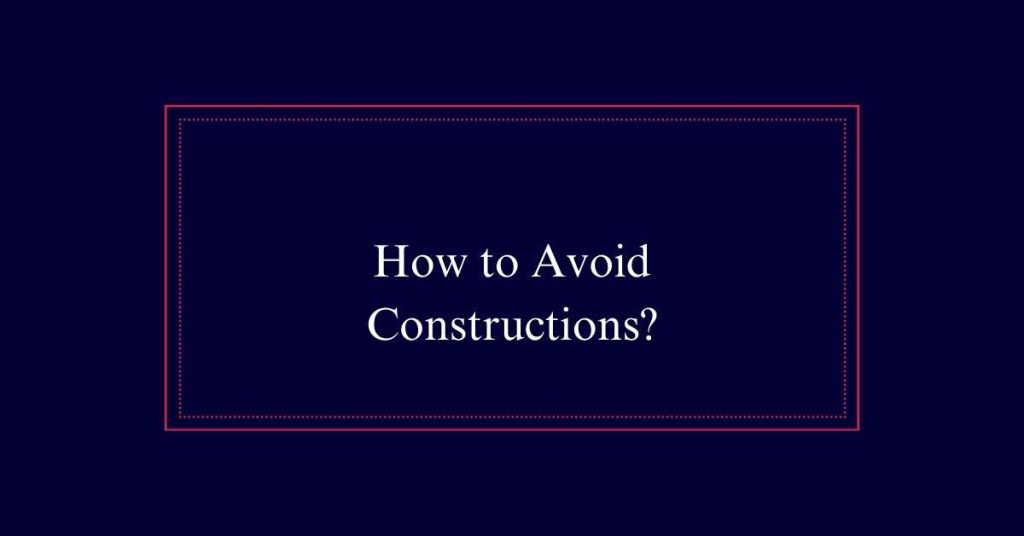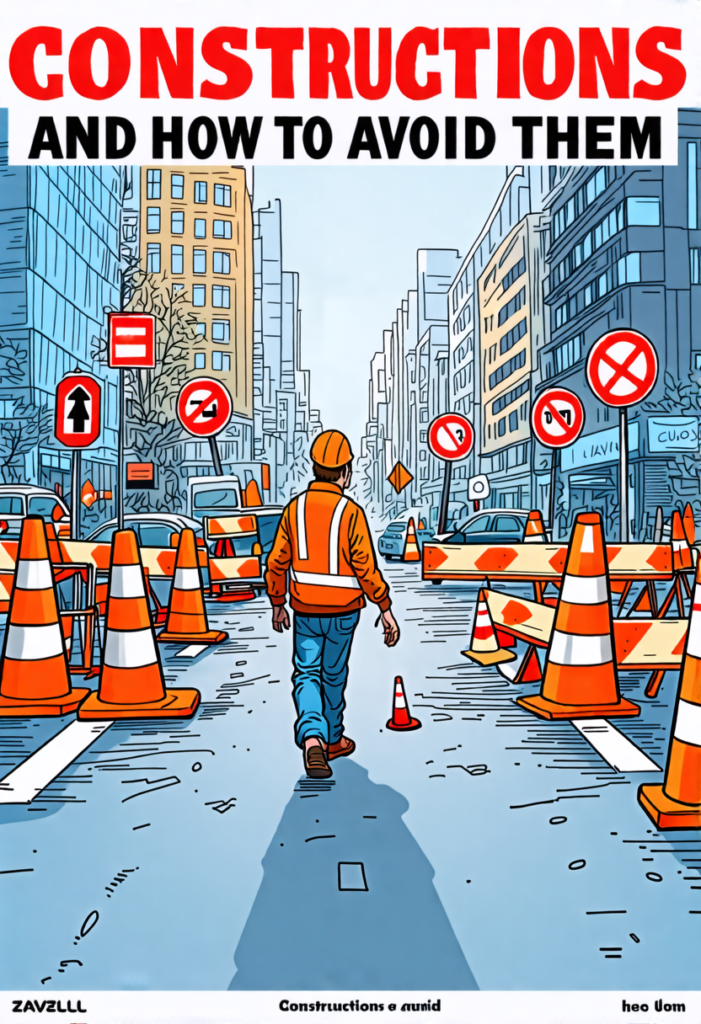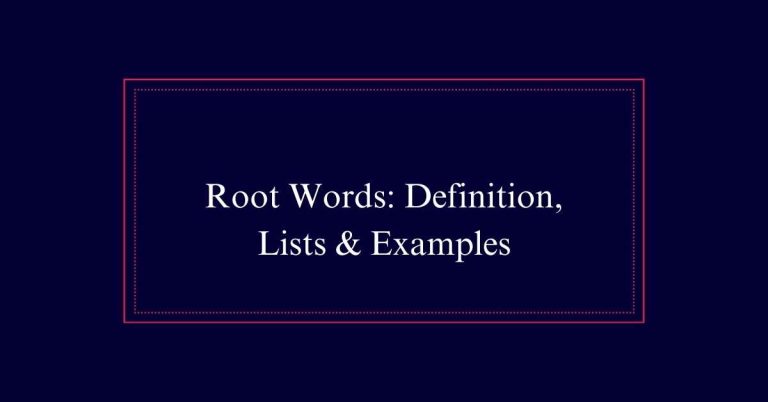How to Avoid Constructions?
Avoiding mixed constructions is vital for clarity in writing. Mixed constructions occur when sentences have inconsistent elements, causing confusion. Guarantee clear subject-predicate alignment and logical grammatical direction. Avoid abrupt shifts in sentence structure. Thoroughly edit your work to spot inconsistencies and awkward phrasing. Reading sentences aloud can help identify problems.
Understanding Mixed Constructions
Mixed constructions occur when a sentence begins with one grammatical structure and unexpectedly shifts to another, creating confusion for the reader. This inconsistency disrupts the logical flow of the sentence.
A well-formed sentence requires a clear subject and predicate. When the predicate does not logically follow the subject, the message becomes muddled. For example, a sentence starting with a noun phrase should not abruptly switch to a verb phrase that doesn’t align.
Mixed constructions often arise in initial drafts. Hence, thorough editing is essential. Writers should make sure their sentences maintain a consistent grammatical direction.
Identifying Incompatible Elements
To identify incompatible elements in a sentence, look for abrupt shifts in grammatical structure that disrupt the logical flow. These shifts often occur when a sentence begins with one type of structure and unexpectedly changes to another.
For example, a sentence might start with a subject expecting a predicate but ends with a clause that does not logically follow. This mismatch confuses the reader and creates a jarring effect.
To spot these issues, read sentences aloud and check for inconsistencies in subject-predicate alignment. Pay attention to sentences that seem awkward or unclear.
Maintaining Logical Structure
Maintaining a logical structure in your writing is crucial for clarity and comprehension. Logical sentences align subjects and predicates consistently. This alignment helps prevent confusion and preserves coherence.
Begin by confirming that each sentence follows a predictable pattern. This involves avoiding sudden shifts in structure or mixed constructions. When you introduce a subject, the predicate should logically follow. For instance, when discussing teachers, make sure the action is related to teaching.
Common First Draft Issues
Many first drafts contain common issues that can disrupt the flow and clarity of the writing. Mixed constructions are frequent culprits. These occur when a sentence starts with one structure and shifts to another, causing confusion.
Writers also often misuse grammar, leading to unclear sentences. Logical sentence structure is essential; subjects and predicates must align to make sense. Another common problem is redundancy, where the same idea is repeated unnecessarily.
Inconsistent tense usage can also confuse readers. Overly complex sentences can make the writing hard to follow. First drafts may include these issues, but careful revision and editing can address them.

Effective Sentence Editing
Effective sentence editing involves meticulously reviewing each sentence for clarity and coherence. Start by checking if each sentence has a clear subject and predicate.
Verify that the sentence structure is consistent and logical. Avoid mixed constructions, where a sentence shifts from one grammatical direction to another, causing confusion.
Read each sentence aloud to catch awkward phrasing or unclear ideas. Simplify complex sentences by breaking them into shorter ones. Rephrase any sentence that seems convoluted or difficult to understand.
Pay attention to punctuation, as it can alter the meaning of a sentence. By focusing on these aspects, your writing will become more precise and easier for readers to follow.
Aligning Subjects and Predicates
Ensuring that subjects and predicates align correctly is vital for maintaining sentence clarity and coherence. A subject must logically connect to its predicate to avoid confusing the reader.
For example, ‘The teacher, who loves math, explains complex problems clearly.’ Here, the subject ‘teacher’ aligns with the predicate ‘explains complex problems.’
Misalignment occurs when the subject sets an expectation unmet by the predicate, such as in, ‘The teacher, who loves math, explaining complex problems.’ This mismatch disrupts readability.
Aim for sentences where subjects and predicates flow naturally to enhance comprehensibility and coherence.
Ensuring Sentence Coherence
Maintaining sentence coherence is essential for clear and effective communication. Coherence guarantees that your ideas flow logically and are easy to understand.
To achieve this, each sentence should connect smoothly to the next, maintaining a consistent structure and thought process.
Here are four key points to evoke a sense of urgency and importance:
- Consistency: Keep a uniform structure throughout your text.
- Transitions: Use appropriate linking words to connect ideas.
- Focus: Stay on topic and avoid unnecessary digressions.
- Clarity: Choose words that are precise and easily understood.
Revising for Clarity
To achieve clarity in your writing, begin by identifying and correcting any mixed constructions. Mixed constructions confuse readers by combining incompatible elements within a sentence.
Start by ensuring each sentence has a clear subject and predicate. If a sentence starts with one structure and shifts to another, revise it for consistency.
Read your work aloud to catch awkward or confusing parts. This practice helps in spotting mixed constructions and improving sentence flow.
Consider breaking longer sentences into two to enhance clarity. Maintain a logical progression of ideas throughout your writing.
Practical Editing Tips
Effective editing begins with reading your work aloud to catch any awkward or unclear parts. This technique helps identify mixed constructions and other issues that may disrupt the flow.
After reading aloud, focus on simplifying complex sentences. Break them into shorter, clearer statements.
Finally, don’t hesitate to seek feedback from others. Fresh eyes can often notice problems you might miss.
Following these steps guarantees your writing is clear, concise, and impactful.
- Surprise: Discover hidden mistakes you overlooked.
- Relief: Enjoy a smoother, more coherent text.
- Pride: Feel confident in your polished writing.
- Satisfaction: Achieve clarity and precision in your work.







